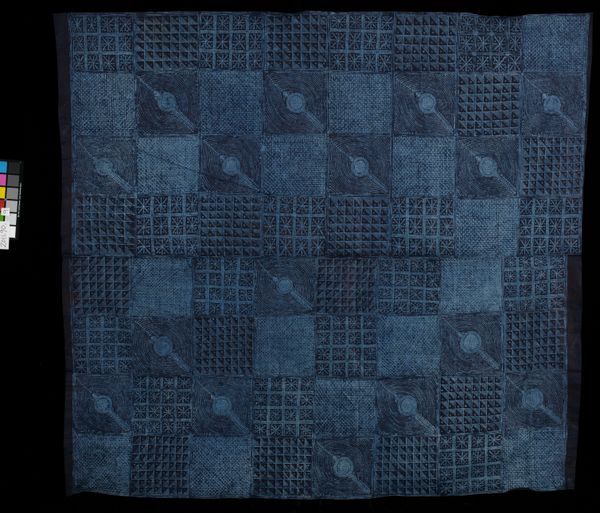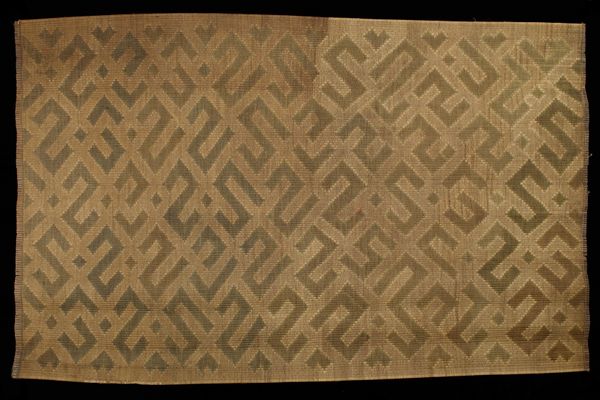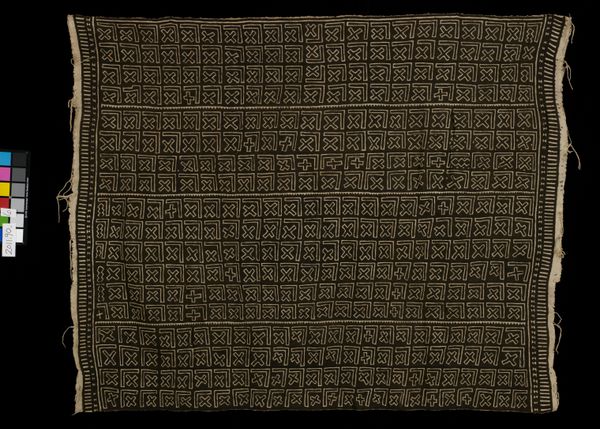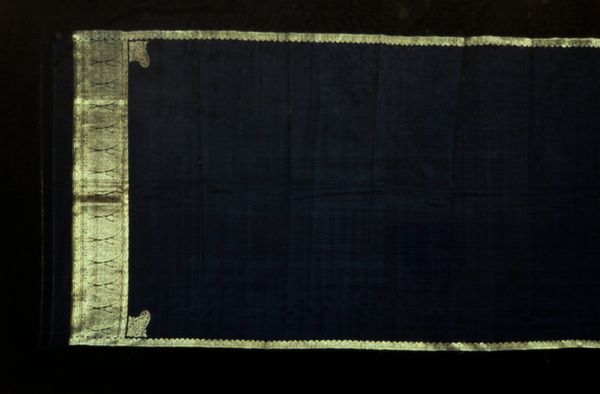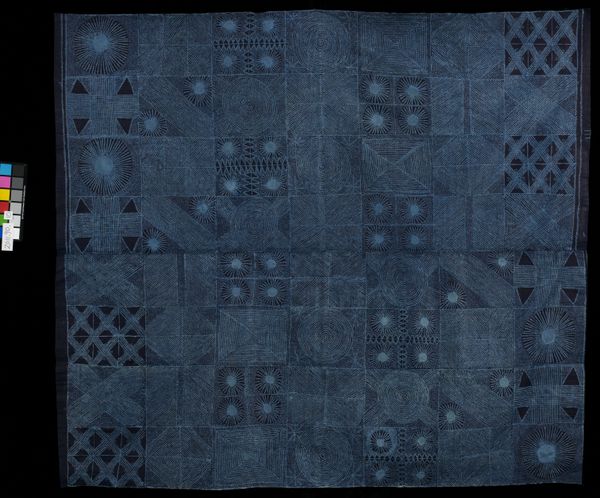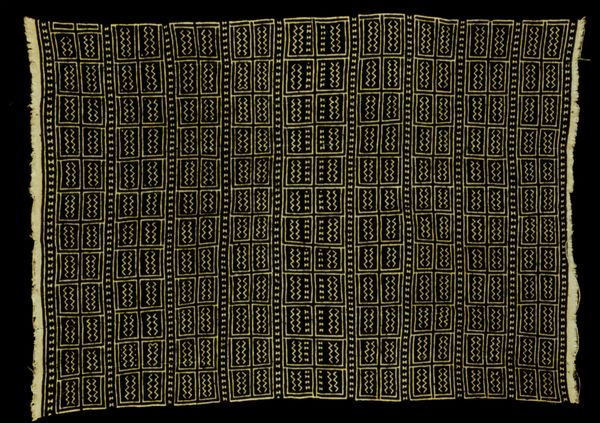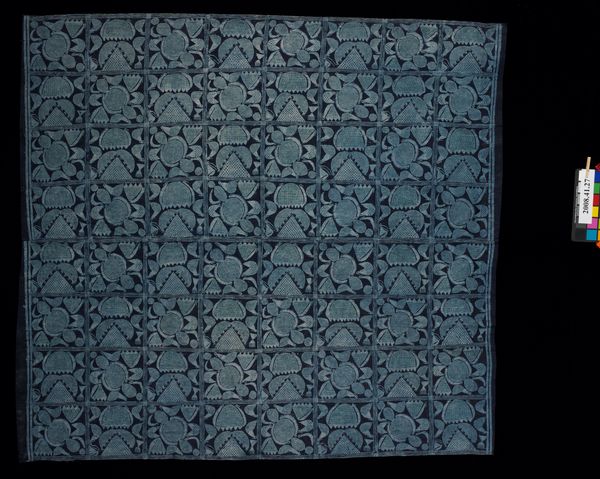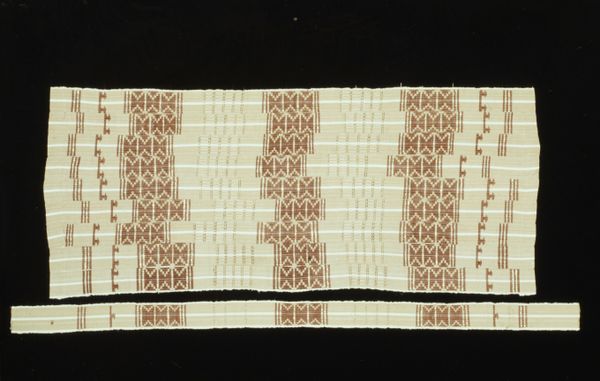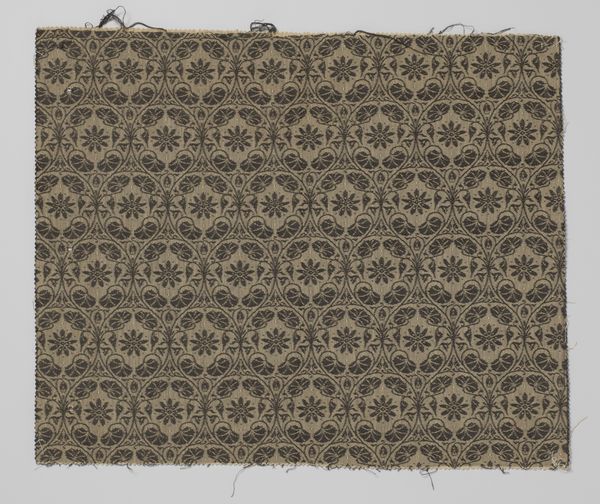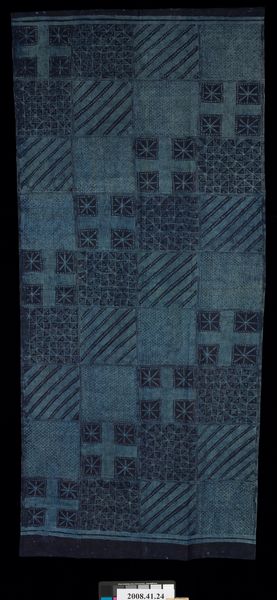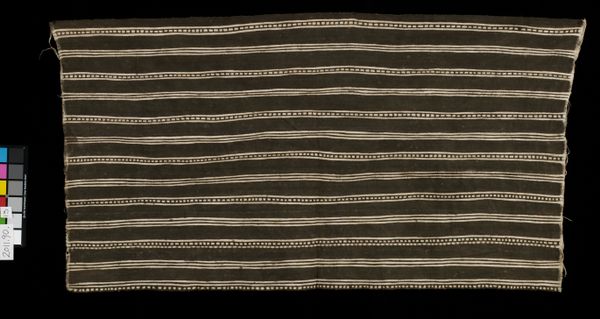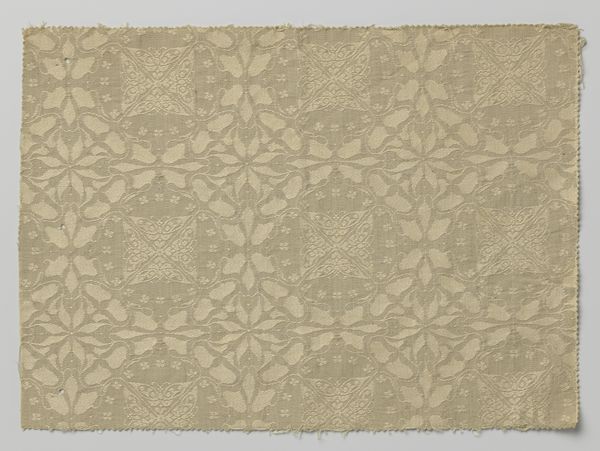
panel, weaving, textile, cotton
#
african-art
#
panel
#
weaving
#
textile
#
geometric
#
cotton
#
textile design
#
yoruba-art
Dimensions: 78 x 57 in. (198.12 x 144.78 cm)
Copyright: Public Domain
Curator: Looking at this woven textile "Panel" by a Yoruba artist around 1950, held here at the Minneapolis Institute of Art, I immediately find myself drawn to its muted palette. What are your first thoughts? Editor: I’m struck by how modern it feels despite being roughly 70 years old. The geometric pattern feels both ancient and somehow, very contemporary. The simple design with subtle variations suggests complex histories and potential power structures within Yoruba culture. Curator: Absolutely, the repeated motifs act like ideograms—each small shape possibly imbued with social meaning within the community. It’s crafted from cotton and employs weaving to produce the rhythm of its design, inviting close reading. There’s visual symbolism that echoes back to the Ifá divination trays. Editor: Considering how textiles can act as historical records, this piece evokes many questions regarding Yoruba societal norms, economic trade, or even spirituality. What statements were they trying to make? Did they face oppression? These elements might provide valuable clues to reveal the stories hidden within the geometric forms. Curator: Yes! Textiles throughout Yoruba history were not mere decorations. As visual narratives, they were woven to communicate status, affiliations, spiritual convictions— acting as complex languages. We need to approach interpreting the specific shapes through available indigenous Yoruba narratives and oral histories to better comprehend it fully. Editor: Definitely. When observing artifacts from colonized societies, you realize how many layers have been peeled away because colonial authorities erased the cultural significance and purpose for items like this one, transforming these into aesthetic objects for museums, divorcing the design from its original social purpose. Curator: That cultural alienation has certainly affected perceptions. To recover meaning, it’s essential to view the piece not just as an object of art but as a medium where each thread carries intentional significance that demands careful analysis to help preserve it. Editor: It truly pushes one to rethink what is considered art and how art serves people and society differently than solely creating it to simply fill up gallery spaces. Curator: I agree. It speaks about connecting ourselves to cultural heritage in complex terms beyond face-value aesthetics. Editor: A sobering and evocative textile to behold.
Comments
No comments
Be the first to comment and join the conversation on the ultimate creative platform.
